#croatian folktale
Text
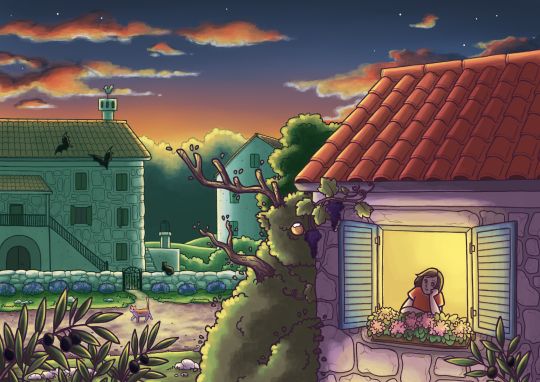
One of my favorite illustrations from the children's picture book I wrote and illustrated: Klokić
Art by me, 2021
#deadrys#deadrysarts#art#digital art#klokić#illustration#children's book illustration#croatian folktale#croatian mythology#slavic mythology
14 notes
·
View notes
Photo
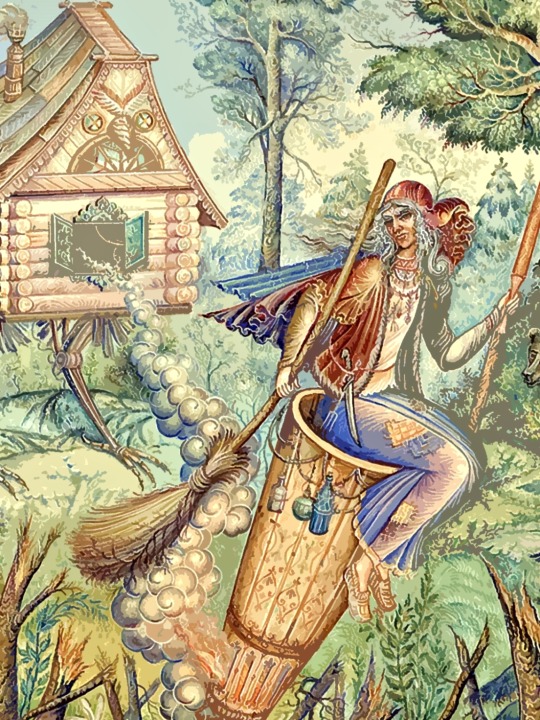

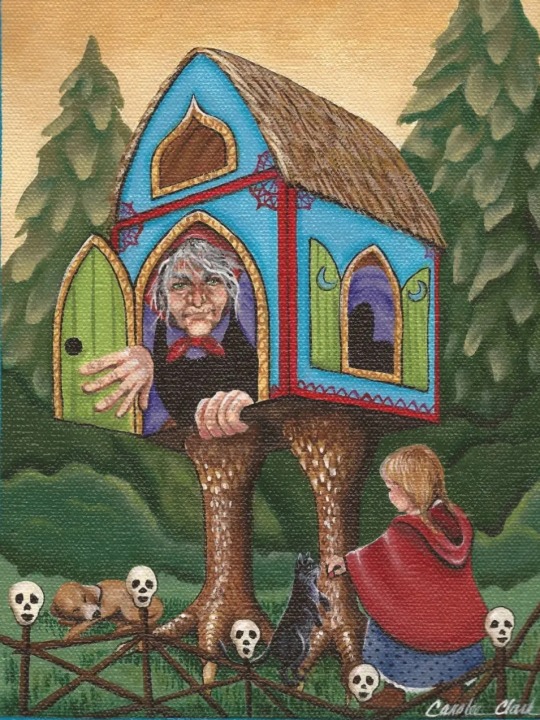

BABA YAGA
🧙🏻♀️ In Slavic folklore, Baba Yaga, also spelled Baba Jaga (from Polish), is a supernatural being (or one of a trio of sisters of the same name) who appears as a deformed and/or ferocious-looking woman. In fairy tales Baba Yaga flies around in a mortar, wields a pestle, and dwells deep in the forest in a hut usually described as standing on chicken legs. Baba Yaga may help or hinder those that encounter or seek her out and may play a maternal role; she has associations with forest wildlife. According to Vladimir Propp's folktale morphology, Baba Yaga commonly appears as either a donor or a villain, or may be altogether ambiguous.
🧙🏻♀️ Andreas Johns identifies Baba Yaga as "one of the most memorable and distinctive figures in eastern European folklore", and observes that she is "enigmatic" and often exhibits "striking ambiguity". Johns summarizes Baba Yaga as "a many-faceted figure, capable of inspiring researchers to see her as a Cloud, Moon, Death, Winter, Snake, Bird, Pelican or Earth Goddess, totemic matriarchal ancestress, female initiator, phallic mother, or archetypal image".
🧙🏻♀️ Variations of the name Baba Yaga are found in many East Slavic languages. The first element is a babble word which gives the word бабушка (babushka or 'grandmother') in modern Russian, and babcia ('grandmother') in Polish. In Serbo-Croatian, Bosnian, Macedonian, Bulgarian and Romanian baba means 'grandmother' or 'old woman'. In contemporary Polish and Russian, baba is the pejorative synonym for 'woman', especially one that is old, dirty or foolish.
🧙🏻♀️ Yaga is more etymologically problematic and there is no clear consensus among scholars about its meaning. In the 19th century, Alexander Afanasyev proposed the derivation of Proto-Slavic *ož and Sanskrit ahi ('serpent'). This etymology has been explored by 20th century scholars. Related terms appear in Serbo-Croatian jeza ('horror', 'shudder', 'chill'), Slovene jeza ('anger'), Old Czech jězě ('witch', 'legendary evil female being'), modern Czech jezinka ('wicked wood nymph', 'dryad'), and Polish jędza ('witch', 'evil woman', 'fury'). The term appears in Old Church Slavonic as jęza/jędza ('disease'). In other Indo-European languages the element iaga has been linked to Lithuanian engti ('to abuse (continuously)', 'to belittle', 'to exploit'), Old English inca ('doubt', 'worry", 'pain'), and Old Norse ekki ('pain', 'worry').
#Baba Yaga#Baba Jaga#slavic culture#slavic#pagan#slavic folklore#poland#russia#serbia#croatia#bosnia#macedonia#bulgaria#romania#slovakia#czech republic#lithuania#slavic mythology#posted by me#🔮
363 notes
·
View notes
Text
SLAVIC RESOURCES
The Anthropological Masterlist is HERE.
The Slavic people, or Slavs, are a European people. They are native to central and eastern Europe, including Siberia.
BELARUS ─ “The Belarusians, or Byelorussians, are an East Slavic people. They are native to Belarus.”
─ Belarusian Information
─ Belarusian Poetry
─ Belarusian Dictionary
BULGARIA ─ “The Bulgarian people are a South Slavic people. They are native to Bulgaria.”
─ Bulgarian Clothing (in Bulgarian)
─ Bulgarian History
─ Bulgarian Language
*ILLYRIA ─ “The Illyrians were an Indo-European people that lived from 1000 B.C.E. to 500 C.E. They lived in the historical area of Illyria.”
─ Illyrians to the Greeks
─ Illyrian Language
MACEDONIA ─ “The Macedonian people are a South Slavic people. They are native to Macedonia.”
─ North Macedonia Information
─ Macedonian History
─ Macedonian Dictionary (in Macedonian)
POLAND ─ “The Polish, or Pole, people are a West Slavic people that share the Polish culture. They are native to Poland.”
─ Polish Art
─ Polish History
─ Polish Dictionary
RUSSIA ─ “The Russian people are an East Slavic people that share the Russian culture. They are native to Russia.”
─ Russian Culture (in Russian)
─ Russian Folktales
─ Ancient Russia
SERBIA ─ “The Serbian, or Serbs, people are a South Slavic people. They are native to the Balkans.”
─ Serbian History
─ Serbo-Croatian Dictionary
SLOVENIA ─ “The Slovene, or Slovenian, people are a South Slavic people that share the Slovenian culture. They are native to Slovenia.”
─ Coastal Galleries in Slovenia (in Slovene)
─ Slovene Dictionary (in Slovene)
UKRAINE ─ “The Ukrainians are an East Slavic people. They are native to Ukraine.”
─ Ukrainian Information
─ Ukrainian History
─ Ukrainian Language
WENDISH ─ “The Wends were a Slavic people. They lived near Germanic settlements.”
─ Wendish Information
─ Wendish Information
YUKAGHIR ─ “The Yukaghir, or Yukagir, people are a Slavic people. They are native to the basin of the Kolyma River in Far East Russia.”
─ Yukaghir Information
─ Yukaghir Culture
#resources#slavic#albania#belarus#bulgaria#illyria#macedonia#poland#russia#serbia#solvenia#wendish#yukaghir#ukraine
126 notes
·
View notes
Video
youtube
Some years ago I posted about a folklore-themed cut-out animated film I was making (you can find the posts under this tag). The WIP of that film has been sitting on my YouTube as Unlisted since 2018, waiting to be finished in order to be shown to the world and now I’ve come to terms with the reality that I will never go back and finish that film xD So it’s public now.
I like some of the concept art I did for it, and even a few of the animated scenes, but I have lost interest in telling this story, and frankly I don’t have the energy to animate a whole thing by myself in my spare time
Ah yes, the story elements were taken from various Croatian folktales. The main character is a fairy, with horse-hooves and a “shining golden star on her forehead”, which was probably a fancy way of saying she was beautiful, but I took it literally cos why not.
All the stuff in it is cut-out from old paintings and such, I didn’t draw any of it.
#nista novo ispod sunca#nothing new under the sun#animated film#student film#folklore#slavic#slavic folklore#slavic fairy#student animation#cutout#medieval#cutout animation#fantasy and mythology#oc#i guess??
1 note
·
View note
Photo

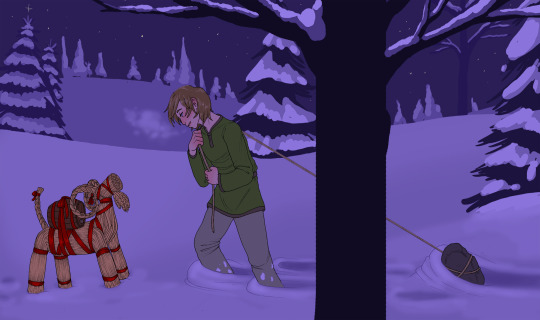
The Deildegast [Norwegian folklore]
A man, sometimes a farmer, illegally moves a boundary marker to enlarge his own land at the cost of his neighbors. When he dies, he is unable to find rest and returns to haunt the world of the living as a ghost as punishment for his crime.
This simple story, though many variations exist, is a recurring theme in folklore throughout the world. There are the Vuurmannen in Flemish/Dutch folklore, the Krivomjeri in Croatian folktales, and also the Norwegian story of the Deildegast.
A Deildegast is the undead spirit of someone who moved a boundary stone in life. It is forced to haunt the area around the stone. The ghost can move on to the afterlife as soon as it puts the stone back where it belonged, but this is impossible for it to do, as a Deildegast is cursed so that the stone would always slip and fall out of his hands during an attempt to move it. These beings are often associated with the Gjenganger, a similar undead creature from Scandinavian folklore.
A Deildegast was first mentioned in the Draumkvedet, which is a Norse poem from the late Middle Ages. Technically and formally it is a ballad, but it has a different melody and some other details make it different from traditional ballads.
Whether the Deildegast is a spectral ghost of a corporeal zombie differs depending on who you ask. In some versions, these beings have the ability to transform into an owl but I found no decent sources for that claim.
Sources:
The Draumkvedet: https://snl.no/Draumkvedet
https://onartandaesthetics.com/2016/09/02/ancient-forests-deep-fjords/
https://maskofreason.wordpress.com/the-book-of-mysteries/know-your-ghosts/europe/gjenganger/
(image source 1: Ole Marius Joergensen)
(image source 2: DontFapGirl on Furaffinity.net)
27 notes
·
View notes
Text
Languages of the world
Judeo-Spanish/Ladino (djudeo-espanyol/ ג'ודיאו-איספאנייול)
Basic facts
Number of native speakers: ~122,000
Recognized minority language: Bosnia and Herzegovina, France, Israel, Turkey
Language of diaspora: Argentina, Brazil, Bulgaria, Canada, Colombia, Cuba, El Salvador, Greece, Italy, Mexico, Morocco, Netherlands, North Macedonia, Panama, Romania, Serbia, Spain, United States
Script: Latin, 27 letters/Hebrew, 28 letters
Grammatical cases: 0
Linguistic typology: fusional, SVO
Language family: Indo-European, Italic, Romance, Western, Gallo-Iberian, Ibero-Romance, West Iberian, Castilian languages
Number of dialects: 3 main groups
History
17th-19th century - Judeo-Spanish is the predominant Jewish language
20th century - sharp decline of the number of speakers as a result of the Holocaust
2001 - first English translation of Judeo-Spanish folktales
Writing system and pronunciation
These are the letters that make up the Latin alphabet: a b ch d dj e f g h i j k l m n ny o p r s sh t u v x y z.
Stressed diacritics are not represented. Q and w are only used in loanwords and foreign names.
These are the letters that make up the Hebrew script: א ב ב׳ ג ג׳ ד הו ז ז׳ ח ט י יי כ/- ך ל מ/- ם נ/- ן ניי ס ע פ/- ף פ׳/- ף׳ צ/- .
Grammar
Nouns have two genders (masculine and feminine), two numbers (singular and plural) and no cases. Plural is formed using the Spanish plural morpheme -(e)s, but Hebrew loanwords and some Spanish words build the plural using -im and -ot.
Judeo-Spanish maintains the second-person pronouns tu (informal singular), vos (formal singular), and vozotros (plural).
Verbs are conjugated for tense, mood, person, and number.
Some adjectives and nouns contain more gendering cases than standard Spanish.
Dialects
There are three main dialect groups: North-Eastern, North-Western, and South-Eastern.
Some of the dialects have limited mutual intelligibility between them due to the relative isolation of many communities and to the adoption of large amounts of loanwords from surrounding languages, such as Arabic, Bosnian, Bulgarian, Greek, Serbo-Croatian, and Turkish.
104 notes
·
View notes
Text
Balkan Bestiary: Ala
A creature, it is weather demon that can be found in Serbian, Croatian, Montenegrian, Bulgarian, Macedonian and Albanian beliefs, it is very popular and wide spread spirit which was immensely feared and important, because to population that relied greatly on their agrarian lifestyle to survive.
Ala, sometimes called hala, has several etymological explanations behind it. Some think that name may have come from Turkish word for snake. Others think that it may have it’s origin in Greek word for hail. It may also be derived from proto-slavic word for terrible weather. There is obvious connection with alav, archaic word for very gluttonous person, but it is hard to determine whether creature was named after it, or word is derived from folkloric monster. In Albanian folklore there is creature known as kulshedra, kuçedra or bulla, which is very similar to ala.
Ala is powerful and dangerous serpentine sky monster, responsible for creating tumultuous and chaotic storms that destroy harvest, bringing down thunder and hail upon crops. As such, it is very much problem for humans, and often has to be fought off by zmajevi (dragons, and it’s counterparts), or sometimes, eagles and saints. It can be seen as descendant of animist beliefs in storm spirits, as it sometiems seems as if ala is storm itself.
Another of it’s defining characteristics is it’s appetite. Ala in incredibly gluttonous, and ever hungry, which is why it attacks human dwellings, to steal away their crops. Some believe that destruction of crops and soreading of famine is how ala feeds, that it steals away vitality and life of earth’s bounty.
(Ala is often, in nearly 90% of tales, portrayed as feminine spirit, while dragons are primarily masculine. However, as there are famous tales of male alas, I will use it for sake of convenience. Worth noting is that in most Balkan languages the nouns are gendered, so ala as species being feminine might not apply to specific spirit, just as fish is feminine noun, and chair, and rain... Nonetheless, fact that dragon-ala conflict can be seen as conflict between male and female spirit of same type is intriguing line of thought.)
The eclipses were often attributed to ala, sometimes claimed to be result of ala trying to eat Moon and/or Sun. People would obviously react negatively to this ( both because of scary folklore, but also, eclipse is very surprising and scary when you are farmer dealing with stubborn bull that refuses to be yoked). People would go out, bang on pots and pans to scare ala away, and recite ritual chants to banish it.
How does ala look? Well, that too can be ambigious sometimes, but thankfully there are more accounts of it, some quite descriptive. While sometimes invisible, or hidden spirit, it is also often described as black cloud or wind spreading across land, highlighting it’s origins as animistic explanation for storm. Often, it is a giant, monstrous serpentine monster, sometimes said to be so tall that it’s head remains hidden in clouds, while it’s tail drags across earth. It can have wings and several heads, and often can also resemble usual depiction of western dragon.
Ala’s origins are most intriguing to me. Like dragons, ala too begins life as ordinary snake, and then over long period of years, changes into monster. Explanation is rarely given ( especially since period neccesary for becoming dragon is shorter than one for ala), but some tales claim that ala is born from snake that has remained in underground darkness, unseen by human eyes, for over a century. After those years pass, it shall ‘’reveal it’s legs’’ and unveil wings.
Ala’s main and most dangerous powers were it’s power over weather, the ability to cause storms and control wind, summon or take away rain, bring hail and disaster. It however had many other abilities, beyond that and flying, of course. It was believed that, aside from it’s immense size and strength, ala’s head was so horrifying that whoever looked at it would be driven to madness. It’s breath and presence were poisonous, and could cause men to fall sick and crops to wither. It was also capable of shapeshifting, mostly wild animals, but sometimes women too.
It’s most dangerous ability, however, was power to possess humans. It would sneak inside person’s body, sometimes in form of dark smoke or ill stench, and unknowingly hide inside, finding both refuge from enemies, and being close enough to terrorize commmunity. Often people affected wouldn’t notice anything, but their appetites would become enormous. One story claims that St. Simeon ( born Stefan Nemanja) was possesed by an ala, until St. Sava ( his son, born Prince Rastko, and maybe most important Serbian saint) cast it out.
This ability is connected to belief in aloviti, the ‘’ala-like’’ people, in some places also called zduhaci or zmajeviti ( the dragonlike). They are people whose souls leave body to become dragonlike spirits that defend village’s crops and weather. In traditions connecting them to alas, they are either children alas have with humans, survivors of ala attack or possession, or alas themselves. A claim amy even be made that all weather related demons and dragons are these men, protecting their own and attacking neighbouring villages.
Ala is usually malicious, and always unclean force, but it can be beneficial to humans. Whether due to debt, the bargain, pragmatics of living there, or even genuine connection, ala may particular region as it’s domain, and defend it’s humans from other spirits. Sometimes it may even develop attachment to particular human and aid them, such as helping a prince she grew fond of in quest, or deciding to become human girl’s godmother. In such cases ala is to be treated with respect and gratitude, but you should never forget that it is still violent and capricious demon, whose ‘’goodness’’ extends only to interests of it’s human friend.
In some fairy tales ala takes on roles of more classical dragon in caves, or monster demanding tithe of maidens at bottom of lake ( a connection to azdaha is possible), or wicked witch in woods. In those cases ala will be antagonist, but can even be helpful if you fulfill it’s tasks. Some connection had been made with Baba Yaga, but whether it’s just coincidence of chtonic beings fulfilling ambigious functions in folktales, or both figures are derived from Proto-Slavic storm goddess, is up for anybody to guess and never find out.
13 notes
·
View notes
Text
Guardians of The Underworld
Cerberus
“Cerberus – also known as the “hound of Hades” – was the multi-headed dog who guarded the gates of the Underworld, preventing the dead from leaving, and making sure that those who entered never left. A child of Typhon and Echidna, he was part of a monstrous family, which included Orthus, the Lernaean Hydra, and the Chimaera as well. Only on three occasions Cerberus was tricked by visitors of Hades: Heracles did it with his strength, Orpheus with his music, and the Sybil of Cumae with a honey-cake.”
“Descriptions of Cerberus vary, including the number of his heads. Cerberus was usually three-headed, though not always. Cerberus had several multi-headed relatives. His father was the multi snake-headed Typhon, and Cerberus was the brother of three other multi-headed monsters, the multi-snake-headed Lernaean Hydra; Orthrus, the two-headed dog who guarded the Cattle of Geryon; and the Chimera, who had three heads: that of a lion, a goat, and a snake. And, like these close relatives, Cerberus was, with only the rare iconographic exception, multi-headed.”

Zmey
“A Zmei Gorynich or zmey and byliny (Russian epic poetry), is a dragon or serpent, or sometimes a human-like character with dragon-like traits.
“The word zmei in Russian is the masculine forms of zmeya, a feminine noun, meaning "snake".”
“The dragon in Russian folk fiction may be female, in which case she is called zmeya. The tendency is for the prose folktale versions to have male dragons, and the byliny poetry to have the females. This will affect the behavior of the dragons. For instance, only the male dragons will capture or captivate a princess or a maiden as a love interest.”
“The zmei is often depicted with multiple heads, and the number of heads may be 3, 6, 9, or 12. A three-, six-, nine-, and twelve-headed dragon are defeated on successive nights by the hero of the tale "Ivan the Peasant's Son and the Little Man the Size of a Finger". The twelve-headed one was hardest to kill, and although the hero beheaded it nearly completely, the last head had to be taken by six men provided to Ivan by the Tsar.”
“A Slavic dragon is any dragon in Slavic mythology, including the Russian zmei, known in Ukraine as zmiy, and its counterparts in other Slavic cultures: the Bulgarian zmei, the Slovak drak and šarkan, Czech drak, Polish żmij, the Serbian and Croatian zmaj, the Macedonian zmey. The Romanian zmeu is also a Slavic dragon, but a non-cognate etymology has been proposed.
A zmei may be beast-like or human-like, sometimes wooing women, but often plays the role of chief antagonist in Russian literature. In the Balkans, the zmei type is overall regarded as benevolent, as opposed to malevolent dragons known variously as lamia, ala or hala, or aždaja.
The Polish smok (e.g. Wawel Dragon of Kraków) or the Ukrainian or Belarusian smok, can also be included. In some Slavic traditions smok is an ordinary snake which may turn into a dragon with age.
Some of the common motifs concerning Slavic dragons include their identification as masters of weather or water source; that they start life as snakes; and that both the male and female can be romantically involved with humans.”

Garmr
“In Norse mythology, Garmr or Garm (Old Norse "rag”) is a wolf or dog associated with both Hel and Ragnarök, and described as a blood-stained guardian of Hel's gate.”
“In Norse Mythology, Garm is a giant wolf, or the “greatest of dogs” in the eddic poem Grimsnisal. He makes his most dramatic appearance in the gods’ end of the world, Ragnarok, where he is left tied up and howling. Snorri Sturlson pits him against the god Tyr in the great battle.
Mythology being what it is, Garm, Hel’s hound (as in Loki’s daughter Hel), and Fenrir all get a bit mixed up at times depending on whose version of the stories you read. This, of course, totally justifies my reasoning to use “Garm” as the name of my wolf shapeshifter guardians in the Nine World. (I wrote that last sentence with my tongue firmly in my cheek… ) Fenrir, however, is a lot better defined in Norse myth and thus kept his identity in my books.”
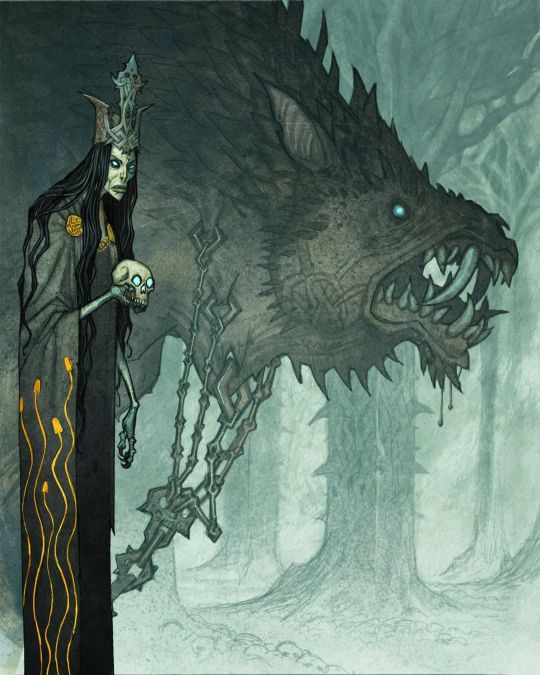
To be honest when I only started looking into this Knew both Greek and Norse mythologies had guard dogs for the underworld and I thought Zmey the dragon stood out a lot but as soon as I searched up Zmey and had a look at pictures and how he’s depicted I realised he had three heads just like Cerberus. I found this overlap really interesting as now two mythologies had guardians with 3 heads and it really seems like a pattern. Now I feel that Cerberus is the perfect mix of the two other mythologies turning the wold and three headed dragon into a three headed dog.
https://en.wikipedia.org/wiki/Garmr
http://www.loridevoti.com/fenrir-garm-wolves-norse-myth/?doing_wp_cron=1600937334.8865990638732910156250
https://www.greekmythology.com/Myths/Creatures/Cerberus/cerberus.html
https://en.wikipedia.org/wiki/Cerberus
https://en.wikipedia.org/wiki/Zmei_(Russian)
https://en.wikipedia.org/wiki/Slavic_dragon
5 notes
·
View notes
Text

In Slavic folklore, Baba Yaga, (Russian: Ба́ба-яга́) also spelled Baba Jaga (from Polish) is a supernatural being (or one of a trio of sisters of the same name) who appears as a deformed and/or ferocious-looking woman. In Russian fairytales Baba Yaga flies around in a mortar, wields a pestle, and dwells deep in the forest in a hut usually described as standing on chicken legs. Baba Yaga may help or hinder those that encounter or seek her out and may play a maternal role; she has associations with forest wildlife. According to Vladimir Propp's folktale morphology, Baba Yaga commonly appears as either a donor or a villain, or may be altogether ambiguous.

Baba Yaga depicted in Tales of the Russian People (published by V. A. Gatsuk in Moscow in 1894)
Look up Baba Yaga in Wiktionary, the free dictionary.
Andreas Johns identifies Baba Yaga as "one of the most memorable and distinctive figures in eastern European folklore", and observes that she is "enigmatic" and often exhibits "striking ambiguity".[1] Johns summarizes Baba Yaga as "a many-faceted figure, capable of inspiring researchers to see her as a Cloud, Moon, Death, Winter, Snake, Bird, Pelican or Earth Goddess, totemic matriarchal ancestress, female initiator, phallic mother, or archetypal image".[2]
EtymologyEdit
Variations of the name Baba Yaga are found in many East Slavic languages. The first element is a babble word. In Old East Slavic, baba ('midwife', 'sorceress', or 'fortune teller) gives the word бабушка (babushka or 'grandmother') in modern Russian, and babcia ('grandmother') in Polish. In Serbo-Croatian, Macedonian and Bulgarian, baba means 'grandmother' or 'old woman'. In contemporary Polish and Russian, baba is the pejorative synonym for 'woman', especially one that is old, dirty or foolish. Baba may also have a pejorative connotation in modern Russian, both for women as well as for an effeminate, timid, or characterless man. As with other kinship terms in Slavic languages, baba may be used in other ways, potentially as a result of taboo; it may be applied to various animals, natural phenomena, and objects, such as types of mushrooms, cake or pears. In the Polesia region of Ukraine, the plural baby may refer to an autumn funeral feast. The element may appear as a means of glossing the second element, iaga, with a familiar component, or may have also been applied as a means of distinguishing Baba Yaga from a male counterpart.[2]
Yaga is more etymologically problematic and there is no clear consensus among scholars about its meaning. In the 19th century, Alexander Afanasyev proposed the derivation of Proto-Slavic *ož and Sanskrit ahi ('serpent'). This etymology has been explored by 20th century scholars. Related terms appear in Serbo-Croatian jeza ('horror', 'shudder', 'chill'), Slovene jeza ('anger'), Old Czech jězě ('witch', 'legendary evil female being'), modern Czech jezinka ('wicked wood nymph', 'dryad'), and Polish jędza ('witch', 'evil woman', 'fury'). The term appears in Old Church Slavonic as jęza/jędza ('disease'). In other Indo-European languages the element iaga has been linked to Lithuanian engti ('to abuse (continuously)', 'to belittle', 'to exploit'), Old English inca ('doubt', 'worry", 'pain'), and Old Norse 'ekki ('pain', 'worry').[3
0 notes
Text

My personal favorite illustration from the children's picture book I wrote and illustrated: Klokić
Art by me, 2021
#deadrys#deadrysarts#art#digital art#klokić#illustration#children's book illustration#croatian folktale#croatian mythology#slavic mythology
12 notes
·
View notes
Text
slavic myths/folklore resources
Since I’ve had a few people tell me they’re interested in Slavic myths now, I figured I’d put together an extensive guide of where to find out more. For simplicity’s sake, everything here is in English. I have also refrained from linking Wikipedia to ensure accuracy. Do remember that Russian and Slavic myths aren’t synonymous, there are some vast regional differences between the East/West vs South Slavic groups concerning myths / culture.
Books
*all of these can be found for $30 & under.
Fairy Tales of the Russians and Other Slavs - Ace Pilkington
60 Slavonic Folktales - AH Wratislaw
The Kingdom Under the Sea - Joan Aiken (general Slavic)
Slavic Mythology - Jan Machal (tread lightly with this one!)
Folk Tales & Fables From Bulgaria* - Roberta Moretti
Croation Tales of Long Ago* - Ivana Brlich Mazuranich
Czech Folktales* - Dr. Baudis
Czechoslovak Fairy Tales* - Parker Fillmore
The Shoemaker’s Apron - Parker Fillmore (Czech & Slovak)
Macedonian Folklore - GF Abbott
Polish Fary Tales* - AJ Gliński
Polish Folklore and Myth - Joanne Asala
Polish Customs, Traditions, and Folklore - Sophie Knab
The Dragon of Krakow - Richard Monte (Polish fairytales)
Best of Polish Fairy Tales - Sergiej Nowikow
Russian Fairy Tales* - Aleksandr Afanasev
Russian Fairy Tales - Marie Ponsot
Nine Magic Pea-Hens and Other Serbian Folk-Tales - Karadzic
Serbian Fairy Tales* - Karadzic
Ukrainian Folktales* - Elena N Grand
The Early Slavs - PM Barford (focused on paganism)
- * denotes most comprehensive books.
- Stay away from The Slavic Way by Dmitriy Kushnir! From what I’ve heard he presents Nazi ideas, nothing to trust in that.
Online
General: an amazing overview (start here, seriously), Britannica, Myths & Folktales of Western Slavs & Russians, Wratislaw’s 60 Slavonic Folktales, Slavic creatures
Russia: some fairy tales, way more fairy tales, some major Russian myths, Pushkin’s Ruslan & Ludmila, feminine myth in Russian culture
Others: Belarussian legends, Croatian fairy tales, Czech & Czechoslovak fairy tales, Macedonian fairy tales, another Macedonian fairy tale, Gliński’s Polish fairy tales, Serbian fairy tales, videos on Serbian myths, a Slovenian fairy tale, a Slovenian legend, Ukrainian fairy tales, some info on Ukrainian fairy tales
Tumblrs: General (x, x, x, x, x), Polish (x, x), Slovenian, Baltic (Estonian, Lithuanian, Latvian), webcomic (creator’s tumblr)
ADVICE:
- rule of thumb, if a source refers to Chernobog (Czernobog) and/or Belobog seriously, don’t trust it. those aren’t real Slavic deities, they’re Christian, and it says a lot if the source didn’t acknowledge that. for convenience, I’ve tried to make sure none of these sources reference them.
- also goes for if the source mentions anything from the Book of Veles; anything in it was written within the past century and is fakelore. this means anything referring to Yav, Prav, and Nav is fake.
These sources aren’t exhaustive but I also try not to make them repetitive. If I find anymore I’ll add them to this list. Feel free to add on!
#slavic mythology#russian mythology#russian folklore#slavic folklore#vasileks russian crash course#might as well tag it lolol.#yall are free to message me for more info.#or if you have questions or w/e.#if the list seems small it's bc there's not much in english..
73 notes
·
View notes
Text
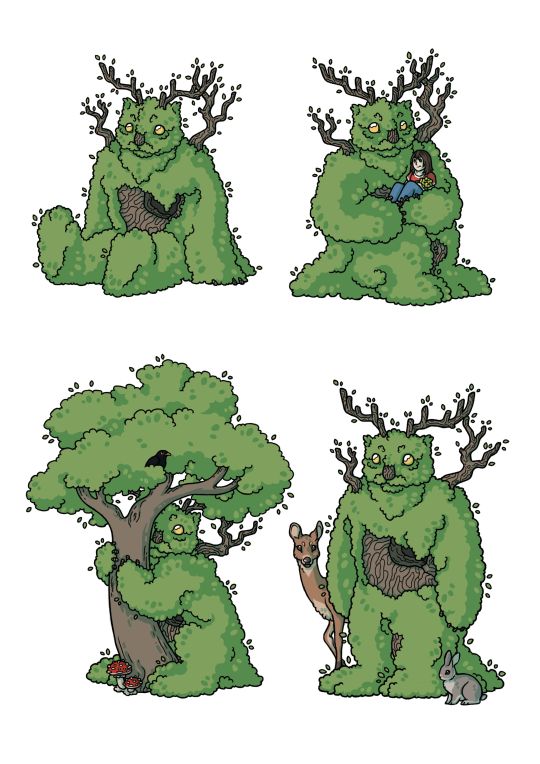
Klokić - stickers
Art by me, 2021
#deadrys#deadrysarts#art#digital art#klokić#illustration#children's book illustration#croatian folktale#croatian mythology#slavic mythology
3 notes
·
View notes
Text

Klokić
Children's book illustration of a creature from a local folk legend, Klokić.
Art by me, 2020
#deadrys#deadrysarts#art#digital art#klokić#illustration#children's book illustration#croatian folktale#croatian mythology#slavic mythology
3 notes
·
View notes
Text

Klokić in the forest
One of practice illustrations for the children's picture book I wrote and illustrated about the nearly forgotten creature from local folk tale, Klokić.
Art by me, 2020
#deadrys#deadrysarts#art#digital art#illustration#klokić#croatian folktale#croatian mythology#slavic mythology#children's book illustration
2 notes
·
View notes
Text

Finally got to this.
Klokić - a small, nearly forgotten creature from a forgotten local legend around Dobrinj on island Krk.
Inspiration and final design.
Art and photo by me, 2020
#deadrys#deadrysarts#art#digital art#illustration#klokić#croatian folktale#croatian mythology#slavic mythology
3 notes
·
View notes
Text
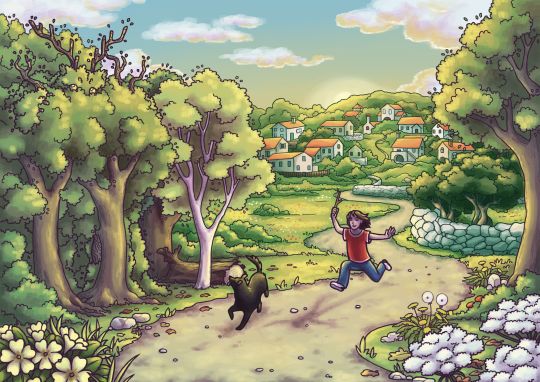
One of my favorite illustrations from the children's picture book I wrote and illustrated: Klokić
Art by me, 2021
#deadrys#deadrysarts#art#digital art#klokić#illustration#children's book illustration#croatian folktale#croatian mythology#slavic mythology
1 note
·
View note